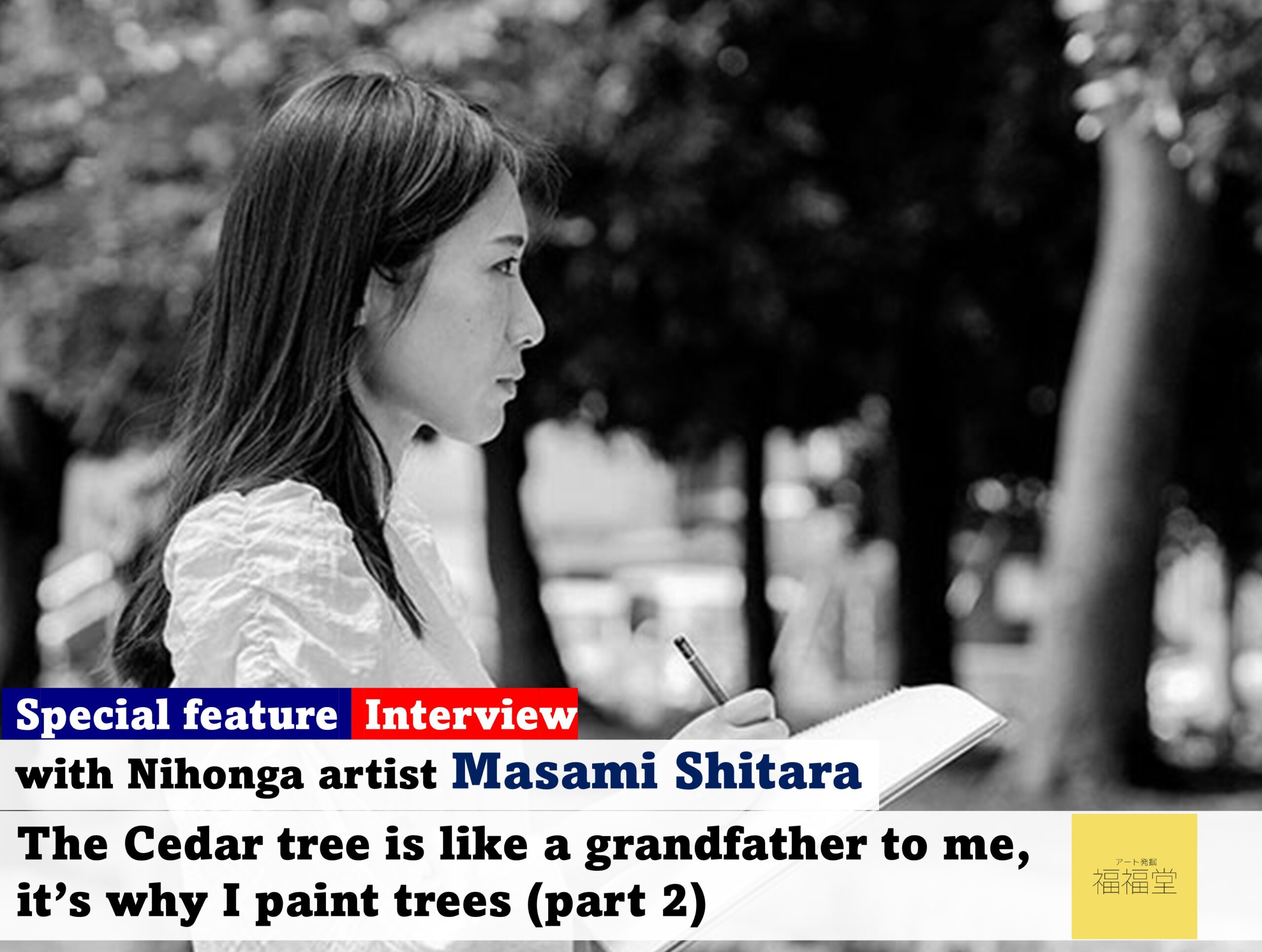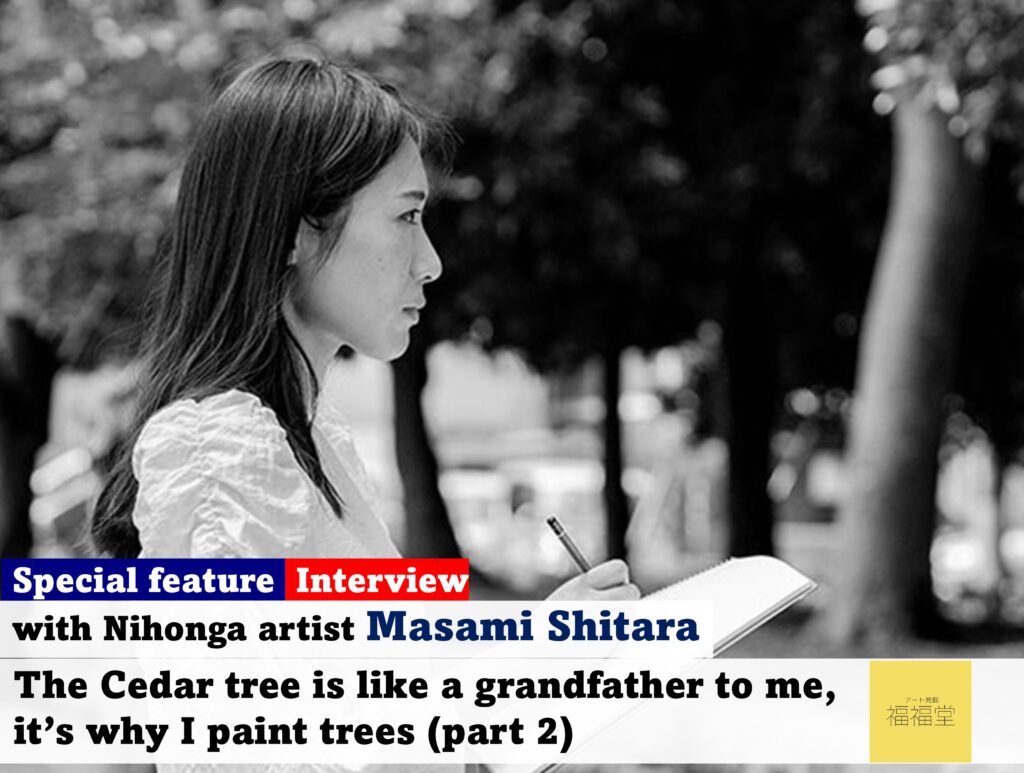
Interview with Nihonga artist, Masami Shitara. Please enjoy reading part 2 of this interview by the FFD editorial team!
Interview with Nihonga artist Masami Shitara (part 2)
Setback at the first solo exhibition
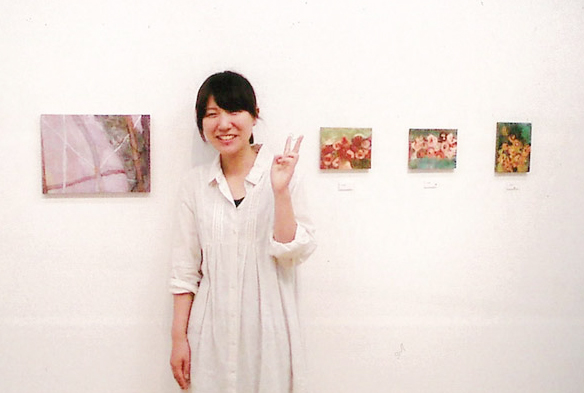
What were you working on after moving to Tokyo?
I immediately started working at an art supply store inside an art college prep school in Ikebukuro. The people working there were all aspiring artists, and more or less in the same boat as me. It was easy to make friends there, and I really enjoyed discussing art and painting with my colleagues. Soon after turning 24, I started bringing my portfolio to art galleries.

Once I found a gallery that would allow me to display my work, I held my first solo exhibition there. Not a single piece sold. Looking back on it now, my work was too immature. Still, I thought it was important to keep going, and I continued to hold solo exhibitions at galleries in Ginza every other year.
A call from a cedar tree
What kind of paintings were you working on during that time?
Ever since college, including the time I was in Tokyo, I’ve continued to paint trees. I still do that today. I also paint the natural landscapes of Yamagata. These themes are what’s closest to my heart.
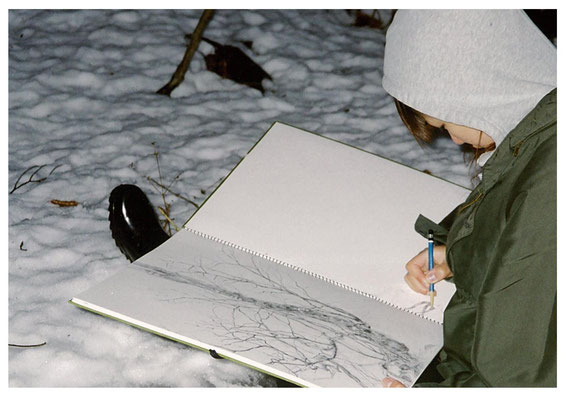
There’s a mountain in Yamagata called Gassan, which is tall and snowy enough to ski on in May. I would often go there with my sketchbook in hand to draw beech and zelkova trees.

Even with fine weather at the base, it could be snowing up on the mountain. There were times when my car slipped and I was nearly stranded in the mountains.

Tree roots are one of my favorite subjects to paint. The trees seem to be freezing cold in a mountain’s high altitude, but they don’t have the freedom to choose where to put down their roots. I grew up in Yamagata, and I feel a kinship with the way the tree roots endure. The roots appeal to me in a familial, almost grandfatherly way, rather than in a mystical sense.

Grandfatherly appeal?
The trees’ presence feels almost like that of an older relative. They stand quietly and are there to support and guide you at times when you need it, giving you a sense of security, closeness, and tenderness. There’s a mountain in front of my parent’s home, with one very large cedar tree. There are plenty of other cedars there, but I’ve always had an affinity for that lone tree. The tree was always visible from my window and I used to talk to it whenever I felt sad.
What did you talk about?
Things I’d talk to my friends about. “Why didn’t that work?” or “What should I have done?” and so on. Sometimes, I thought I could hear a phone bell ringing from the cedar.
You’d hear “ring ring” from the cedar?
Yes, I know it sounds very strange. It’s not that I’d hear words back, but there were times when it felt like the tree and I were exchanging something like telepathy. Trees are a continuous theme in my work. I’ve been given great gifts from trees.

You just have to do the best that you can
The Great East Japan Earthquake struck the second year I was working in Tokyo. I felt deeply troubled seeing the changed landscape in Tohoku, and wondered if there was any meaning to painting. I wanted to find a way I could contribute and support victims, and decided to hold a charity exhibition with two of my college friends. We decided to create something different from what we usually make, so we made small houses with paper clay. I spent every night after work making these miniature houses and illuminating their interiors with lights.

It was also my first experience organizing an exhibition. The touring exhibition itself only lasted one week, but it was held every three months. First in Tokyo, then in Iwate, and in Miyagi. In Iwate and Miyagi, we stayed in hotels and held charity exhibitions. One of the victims of the disaster in a town I visited with the traveling exhibition told me, “Don’t think too much about the meaning of painting, just do your best to do what you can do.” His words were incredibly encouraging, and they’ve stayed with me to this day.

That’s a very heartwarming story.
I still have one of the clay houses I made at that time.
(Interviewer, FFD editorial team)
Artist Masami Shitara bio, awards, and exhibitions
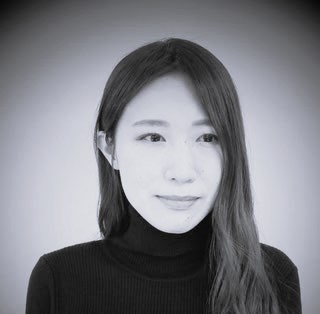
Masami Shitara
1984 Born in Tendo, Yamagata
2009 Completed Nihonga Research Field, Tohoku University of Art & Design, Graduate School of Culture and the Arts
2012
Group exhibition, Hokuto Shichisei (The Big Dipper) Exhibition, Art Space Rashinban, Tokyo
Trio exhibition, Ashita eno Tegami (Letters for tomorrow) Touring Exhibition, Gallery re:tail, Tokyo, To-o-no Kura-no-michi Gallery, Iwate (May), Build Space, Miyagi (June)
Group exhibition, Tobi-no-kai, Sato Art Museum, Tokyo
2015
Group Exhibition Tobi-no-kai, Inoue Gallery, KAMIYA-ART, Tokyo
2019
Participated in “Artists Living Here and Now 2019”, Gallery Echo-ann, Tokyo (2013, 2015, 2017)
Group exhibition, Art Sekigahara, Fukuya Hatchobori Main Building, Hiroshima
2020
Group exhibition, Neo-Naive group exhibition, Hanshin Umeda Main Building, Osaka
EGC Exhibition, Hanshin Umeda Main Building, Osaka
2021
EGC Select Exhibition, Hanshin Umeda Main Building, Osaka
EGC Exhibition, Fukuya Hatchobori Main Building, Hiroshima
Grand EGC Exhibition, Hilltopia Art Square, Tokyo
Duo Exhibition “Masami Shitara and Ayaka Matsuo – Young Artists Exhibition ~ Hikari, Komorebi and Shizuku~”, Fukuya Hatchobori Main Building, Hiroshima
2022
EGC Exhibition, Fukuya Hatchobori Main Building, Hiroshima
Grand EGC Exhibition, Hanshin Umeda Main Building, Osaka
2010
Solo Exhibition Masami Shitara Exhibition, Ginza Yuu Gallery, Tokyo
2011
Solo Exhibition Masami Shitara Exhibition, Ginza O Gallery UP-S, Tokyo
2013
Solo Exhibition Masami Shitara Exhibition, Etsuko Shibata Gallery, Tokyo
2022
Solo Exhibition Masami Shitara Nihonga Exhibition ~Kigi no Sazameki (The Rustle of the Trees)~, Yamaguchi Izutsuya, Yamaguchi
Solo Exhibition Masami Shitara Nihonga Exhibition ~Kaze no Sazameki (The Rustle of the Wind)~, Kokura Izutsuya, Fukuoka
2006
The 33rd Soga Exhibition, Honorable Mention, exhibited at the Tokyo Metropolitan Art Museum, Tokyo, (Honorable Mention in 2007, 2011)
2008
The 34th Spring Soga Exhibition, Honorable Mention, exhibited at the Nihonbashi Takashimaya Department Store, Tokyo, (Honorable Mention in 2010)
The 26th The Ueno Royal Museum, Grand Prize Exhibition, The Ueno Royal Museum, Tokyo
Description of Masami Shitara’s work Yuhi Iro no Machinami (Sunset-colored Cityscape)

This is one of the works from the popular Saitama Cityscape series. The view is of the cityscape, looking from the mountains in Chichibu, Saitama. The trees are illuminated by the setting sun, turning the cityscape red. This is a work that makes you breathe a sigh of relief, as if you’re sipping on a warm drink in one hand. The artist tells us that “the streets of Chichibu are somewhat similar to those of my hometown in Yamagata”.
The artist’s landscapes have a universal appeal. It evokes a sense of nostalgia in the viewer, even if we’ve never visited these places.
(description by FFD)
Details of Masami Shitara’s exhibition
Masami Shitara: Japanese Painting Solo Exhibition
2025.1.8-13
Venue: Yamaguchi Izutsuya 5F Art Gallery
Admission free
